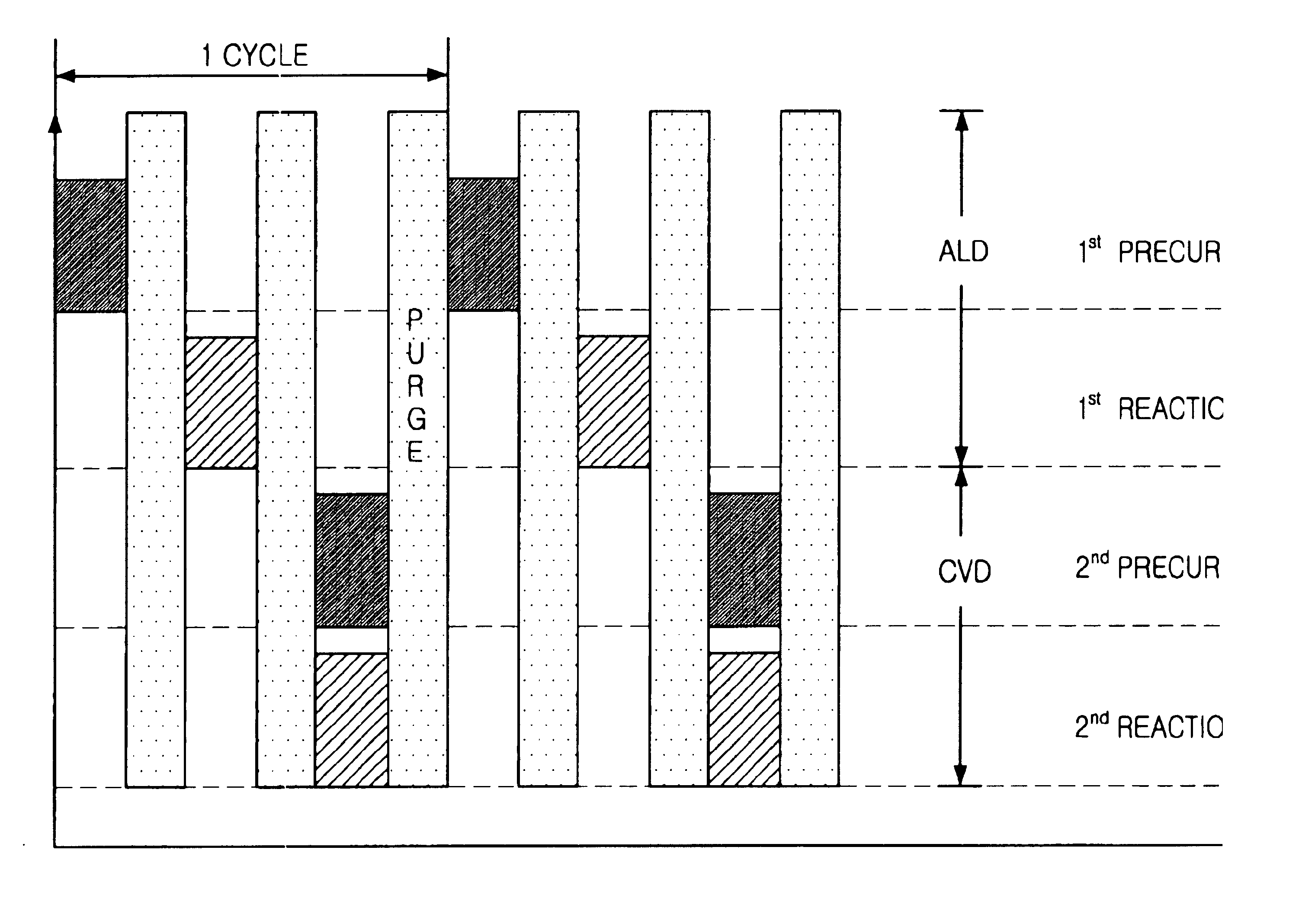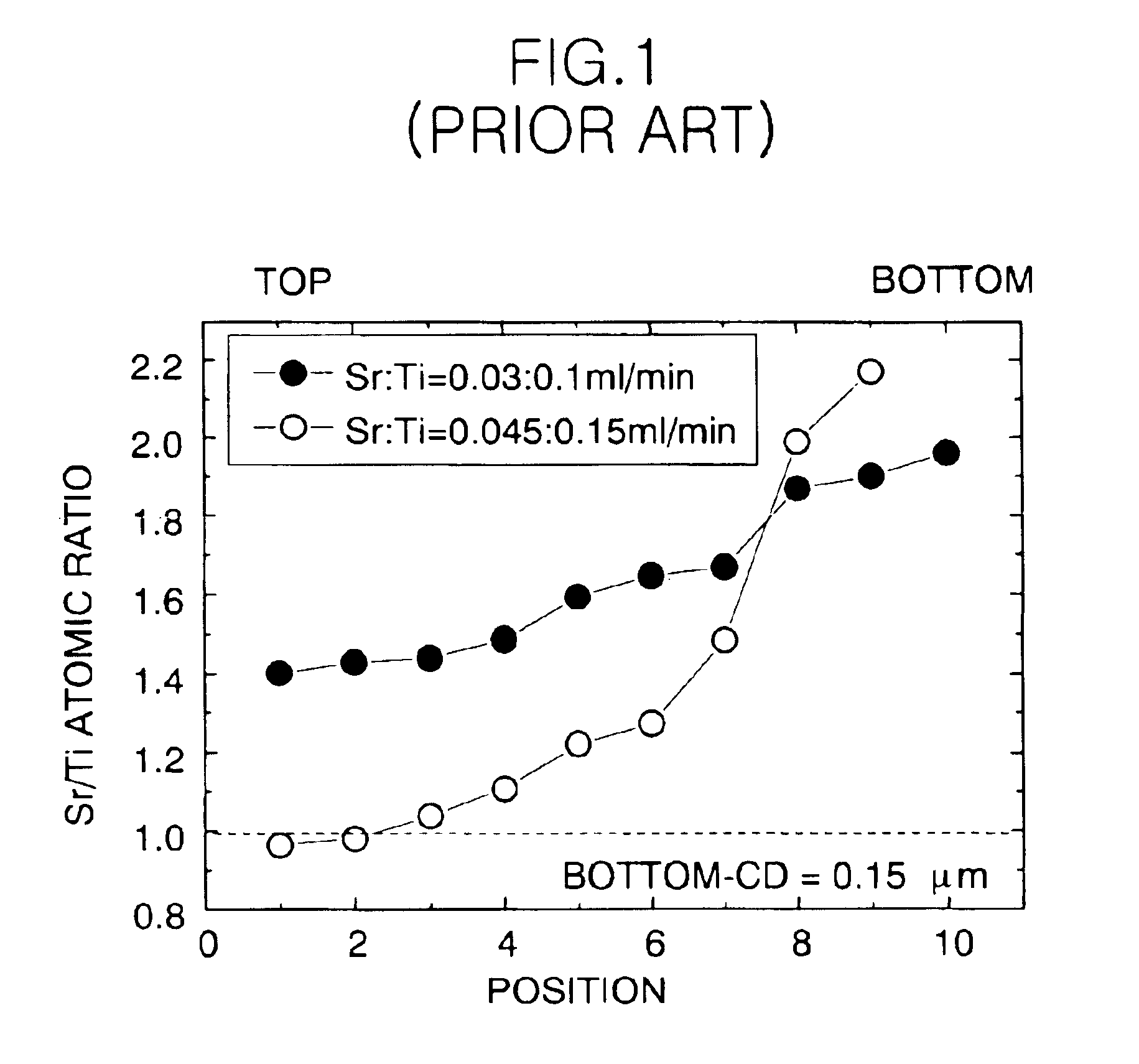Method for forming polyatomic layers
a polyatomic layer and layer technology, applied in the direction of basic electric elements, semiconductor/solid-state device manufacturing, electric apparatus, etc., can solve the problems of low efficiency, difficult to apply a method of increasing the charge storage area of capacitors, and increase production costs, so as to reduce the number of process steps and increase the deposition speed
- Summary
- Abstract
- Description
- Claims
- Application Information
AI Technical Summary
Benefits of technology
Problems solved by technology
Method used
Image
Examples
Embodiment Construction
FIG. 4 shows steps of forming polyatomic layer using a mixed deposition method consisting of an atomic layer deposition method(ALD) and a chemical vapor deposition(CVD) method. Hereinafter, the method for forming BST layer will be described.
Referring to FIG. 4, a first precursor, containing a Ba source and a Sr source, is flowed into a reaction chamber and is absorbed on a substrate on which a polyatomic layer to be formed. The Ba source is selected from the group consisting of Ba(THD).sub.2 -tetraene, Ba(THD).sub.2 -triene(Ba((C.sub.11 H.sub.19 O.sub.2)--NH.sub.2 ((C.sub.2 H.sub.4)NH(C.sub.2 H.sub.4)).sub.2, Ba(THD).sub.2 -pmdt(Ba(C.sub.11 H.sub.19 O.sub.2).sub.2 --C.sub.9 H.sub.23 N.sub.3), Ba(METHD).sub.2 and Ba (O.sub.4 C.sub.14 H.sub.25).sub.2. The Sr source is selected from a group consisting of Sr(THD).sub.2 -tetraene, Sr(THD).sub.2 -triene(Sr(C.sub.11 H.sub.19 O.sub.2)--NH.sub.2 ((C.sub.2 H.sub.4)NH(C.sub.2 H.sub.4)).sub.2), Sr(THD).sub.2 -pmdt(Sr(C.sub.11 H.sub.19 O.sub.2)....
PUM
| Property | Measurement | Unit |
|---|---|---|
| temperature | aaaaa | aaaaa |
| temperature | aaaaa | aaaaa |
| temperature | aaaaa | aaaaa |
Abstract
Description
Claims
Application Information
 Login to View More
Login to View More - R&D
- Intellectual Property
- Life Sciences
- Materials
- Tech Scout
- Unparalleled Data Quality
- Higher Quality Content
- 60% Fewer Hallucinations
Browse by: Latest US Patents, China's latest patents, Technical Efficacy Thesaurus, Application Domain, Technology Topic, Popular Technical Reports.
© 2025 PatSnap. All rights reserved.Legal|Privacy policy|Modern Slavery Act Transparency Statement|Sitemap|About US| Contact US: help@patsnap.com



